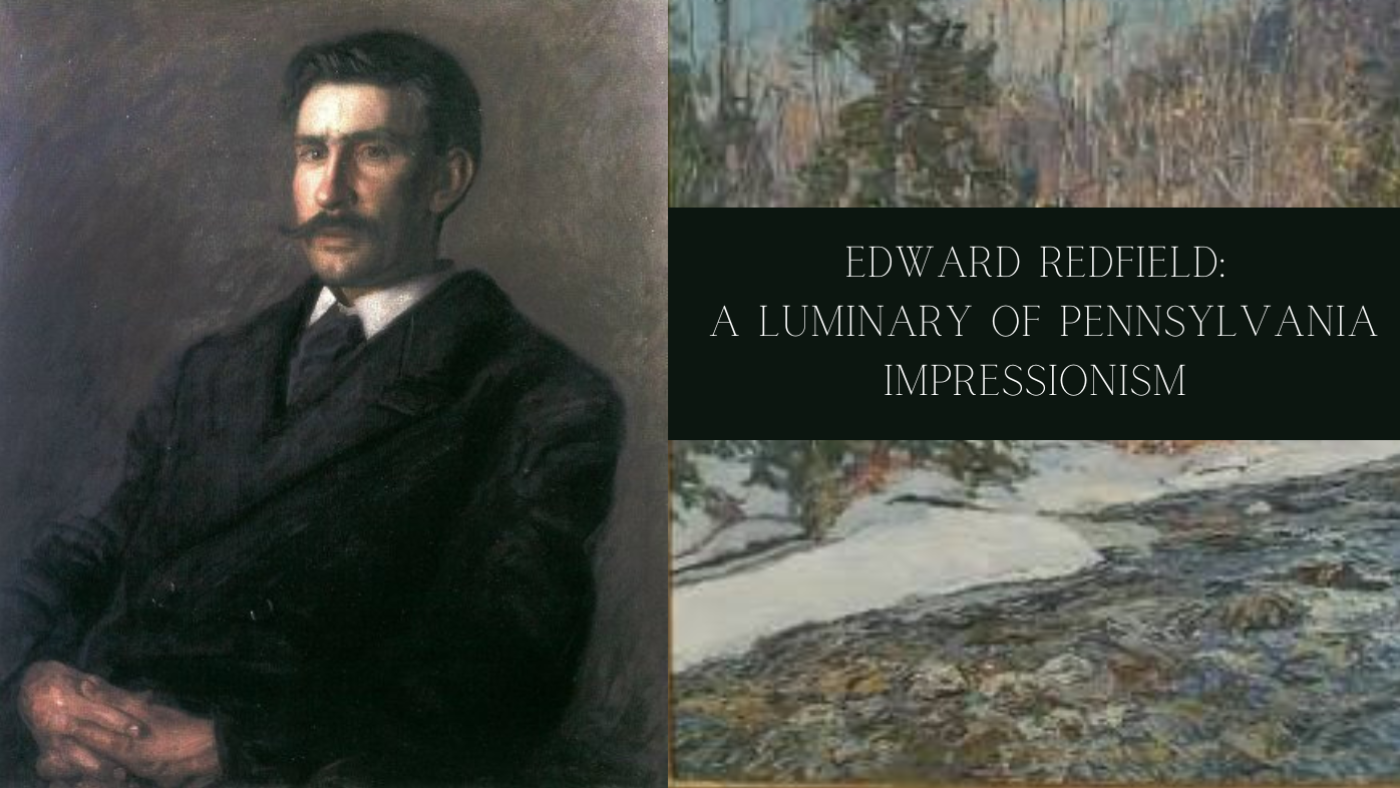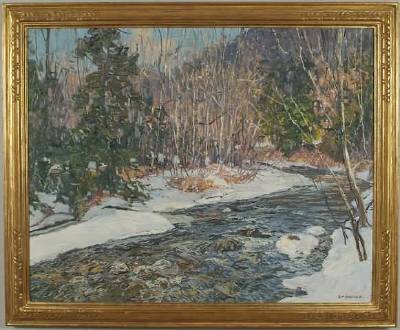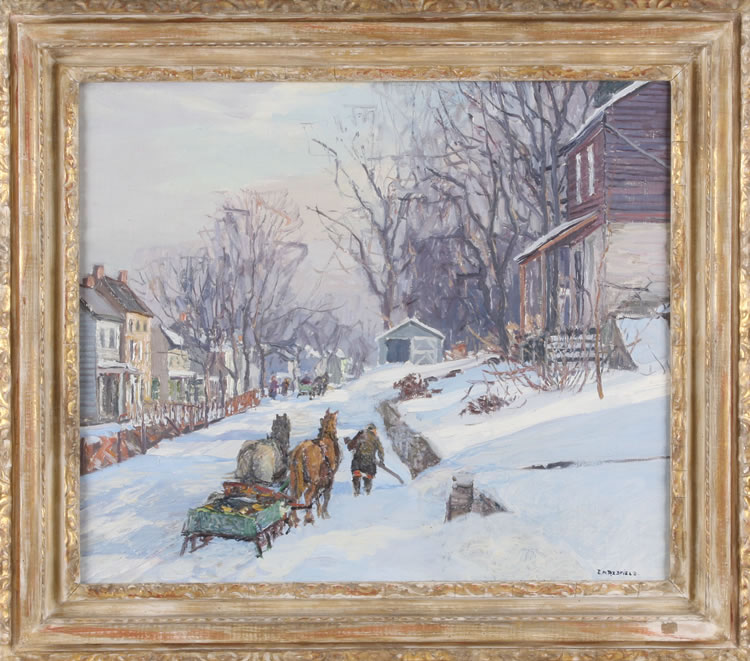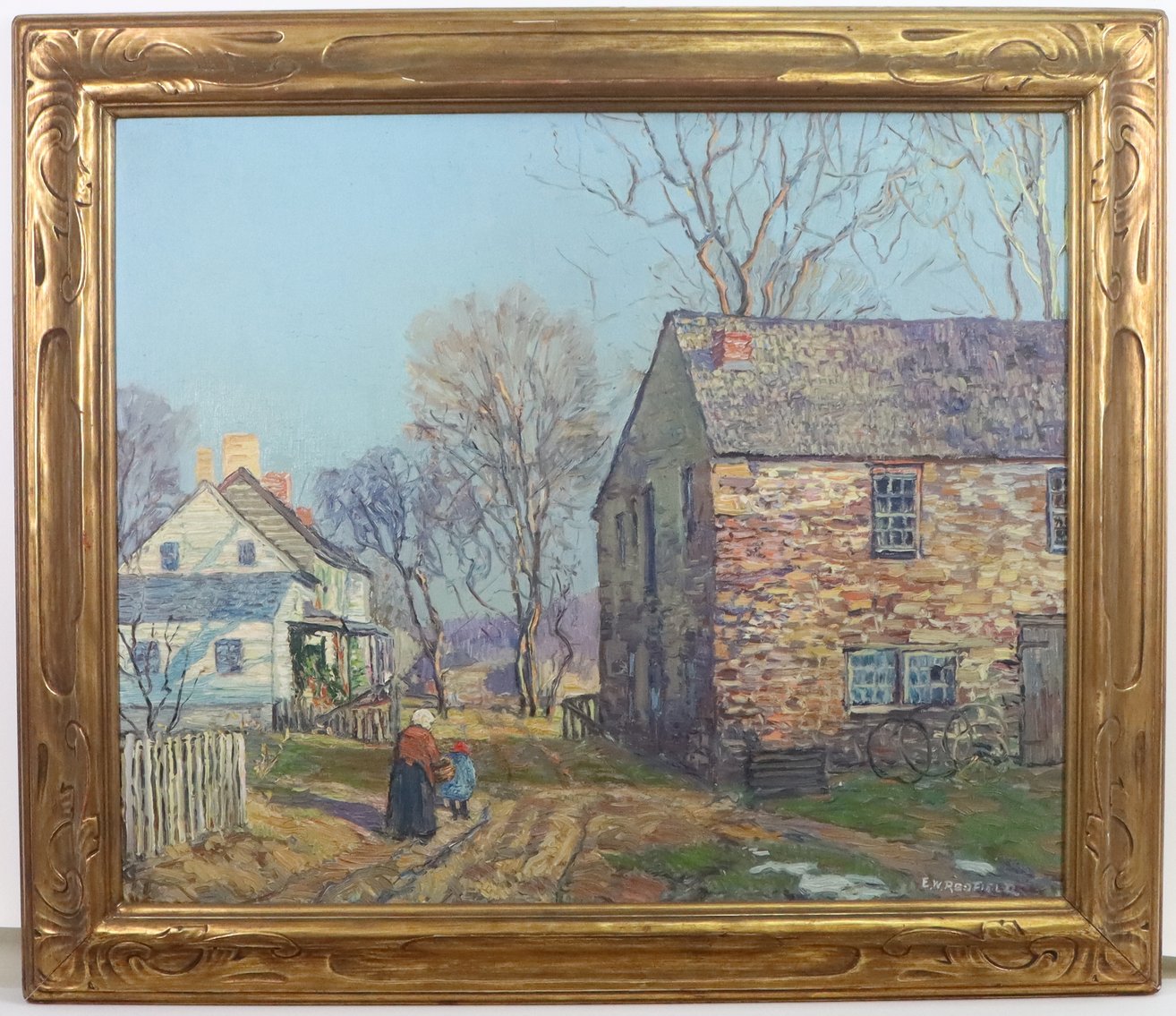Edward Redfield: A Luminary of Pennsylvania Impressionism

Welcome back to our blog series on Pennsylvania Impressionists! Today, we're diving into the life and work of Edward Willis Redfield, one of the most celebrated figures of this artistic movement. Known for his vibrant landscapes and commitment to plein air painting, Redfield played a pivotal role in shaping the Pennsylvania School of Impressionism. Born in 1869 in Bridgeville, Delaware, Edward Redfield's artistic journey began at a young age. He studied at the Pennsylvania Academy of the Fine Arts and later in Paris at the Académie Julian. It was in France where he was first introduced to the Impressionist style that would profoundly influence his work.
Upon returning to the United States, Redfield settled in Centre Bridge, near New Hope, Pennsylvania. This picturesque region, with its rolling hills, historic buildings, and changing seasons, became the backdrop for many of his paintings. Redfield was particularly known for his winter scenes, which he painted outdoors, often in a single sitting, to capture the fleeting light and atmosphere. One of his most renowned works, "The Burning of Center Bridge" (1923), showcases Redfield's ability to infuse drama into his landscapes. The painting depicts a real event - the burning of the Centre Bridge in 1923. Redfield's use of bold, impasto brushstrokes to render the flames and smoke creates a sense of movement and urgency, while his depiction of the surrounding snow-covered landscape remains serene and untouched, highlighting the stark contrast between the natural world and human intervention.


Redfield was a key figure in the establishment of the art colony in New Hope, attracting other artists to the area and fostering a sense of community. He was also a founding member of the Philadelphia Ten, a group of female artists who exhibited together, and he was instrumental in the formation of the New Hope Group, later known as the Pennsylvania Impressionists. Despite his associations, Redfield was known for his independent spirit. He rarely exhibited with other New Hope artists and often critiqued what he saw as a lack of originality among his peers. This independent streak extended to his painting style as well. While his work shares the Impressionist focus on light and color, Redfield's paintings are often more detailed and structured than those of his contemporaries, reflecting his unique interpretation of the Impressionist style.
Edward Redfield's legacy continues to influence artists today. His commitment to painting en plein air, his innovative use of color and light, and his ability to capture the essence of the Pennsylvania landscape have solidified his place in art history. As we continue to explore the Pennsylvania Impressionists, Redfield's work serves as a reminder of the power of individual vision within a shared artistic movement. Stay tuned for our next installment, where we'll delve into the work of another influential artist in the Pennsylvania Impressionist movement. Until then, keep exploring, keep questioning, and keep appreciating the beauty of art in all its forms.

Redfield is now featured in our upcoming Dec. 7th Fine Arts Auction, live at 10:00 AM only at alderferauction.com!










